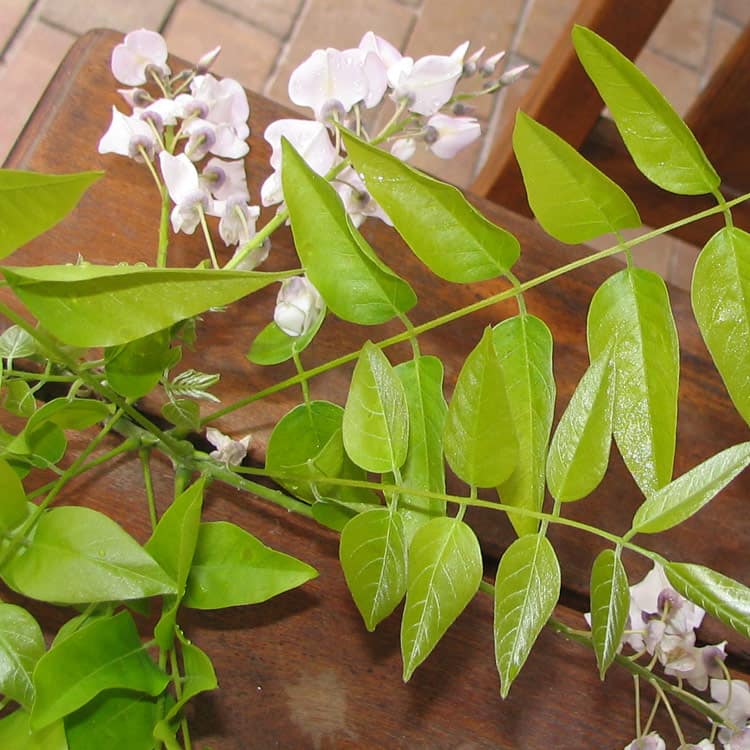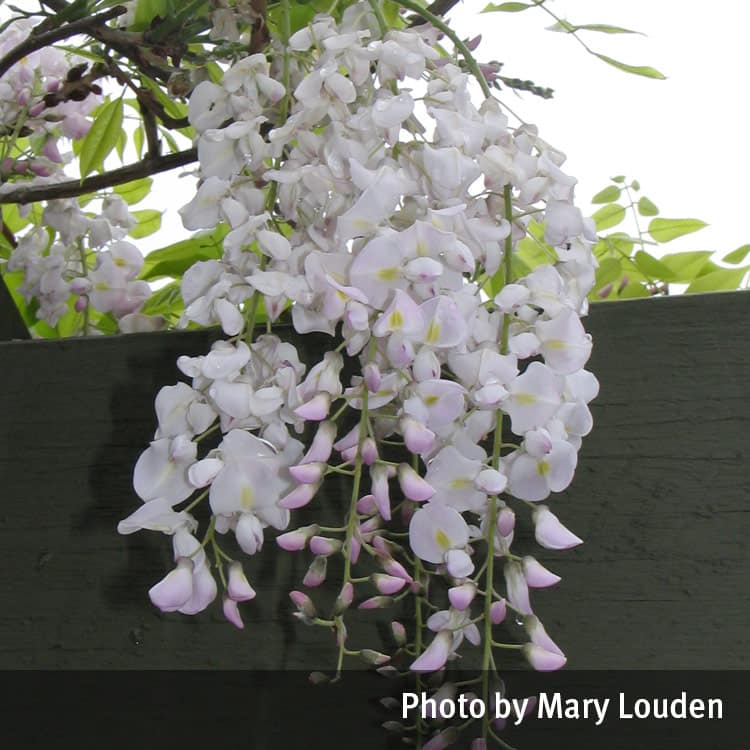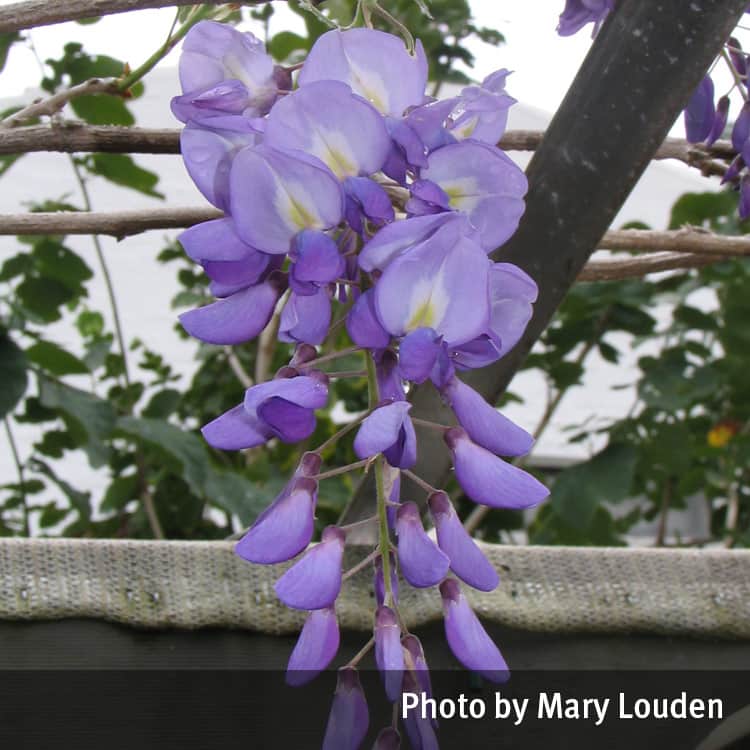Seek urgent medical attention for all ingestions.
Description
A deciduous woody climbing vine popular as a garden ornamental.
The flowers are pea-like and hang in long pendulous clusters, are commonly purple but can also be white or pink in colour.
The leaves are alternate on the stem with either 7-13 (W. sinensis) or 15-19 (W. floribunda) opposite leaflets, one being a terminal leaflet. The leaflets are ovate to elliptic, pointed at the tip and 3-7cm long.
Toxicity
Symptoms
Symptoms can include burning mouth, nausea, abdominal pain, vomiting and diarrhoea, sometimes followed by collapse.
Images



Details
Common name: Japanese wisteria
Botanical name: Wisteria floribunda, Wisteria sinensis
Other common names: Chinese wisteria
Family: Fabaceae
General description: A deciduous woody climbing vine popular as a garden ornamental.
Flowers: The flowers are pea-like and hang in long pendulous clusters, are commonly purple but can also be white or pink in colour.
Leaves: The leaves are alternate on the stem with either 7-13 (W. sinensis) or 15-19 (W. floribunda) opposite leaflets, one being a terminal leaflet. The leaflets are ovate to elliptic, pointed at the tip and 3-7cm long.
Fruit/Berries: The fruit is a pod 10-15cm long covered with short pale brown velvet-like hairs and contains 2-3 flat round seeds dark brown in colour.
Other: All parts of the plant are poisonous, but it is most often the seeds or seed pods that are ingested.
Last updated: July 2023